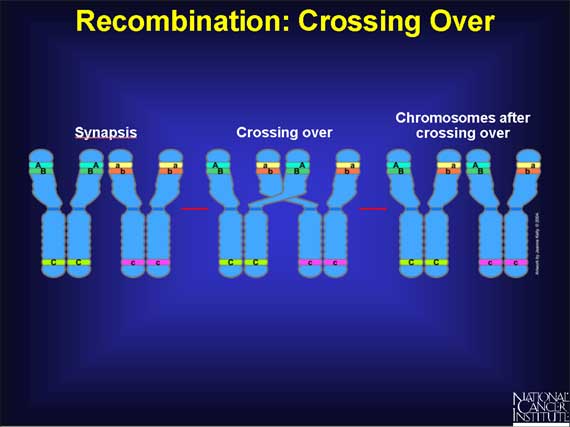|
Early in meiosis, each chromosome pair copies itself. These homologs are all attached at the centromere and are wound very tightly around one another. Right before duplicate sets of homologs pull apart and move toward a different end of the cell to complete the first division, recombination can occur, as the intertwined genetic material separates. Then, later in meiosis, a second division occurs, and even the chromosomes within a homolog move apart, leaving only a haploid number (n) in each ovum or sperm. If mutations occur during meiosis, either in the ova or sperm, these will be germline mutations.
If mutated ova or sperm then go on to fertilization, their germline mutations will pass to every somatic cell in the new individual.

< Previous | Index | Next Slide > |